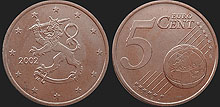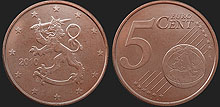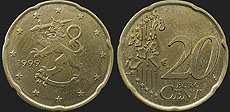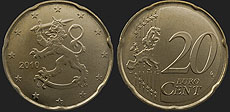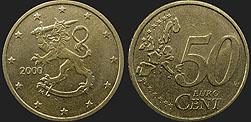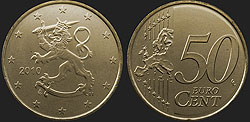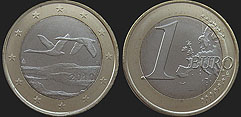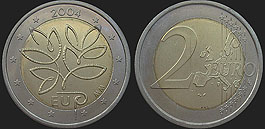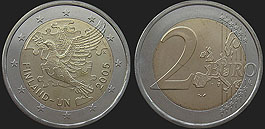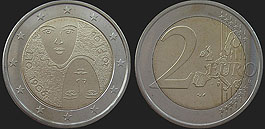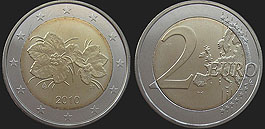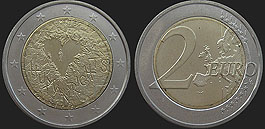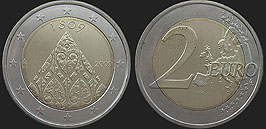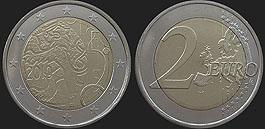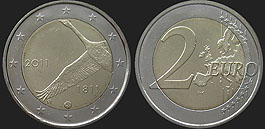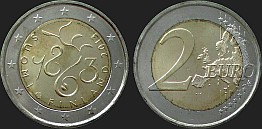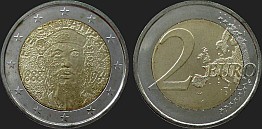FINLAND (from 2002) - Finnish euro coinage [EUR]
1 euro = 100 euro cent
The preparations for the monetary union started in 1991 in Maastricht. In December 1995 in Madrid the name of the new currency was chosen. On January 1st, 1999 Euro [EUR] became an official (although virtual) currency in 11 countries of the European Union (Austria, Belgium, Finland, France, Germany, Ireland, Italy, Luxembourg, the Netherlands, Portugal and Spain). In 2001 Greece also joined the system. The first coins were minted already in 1999, but real money entered circulation only on January 1, 2002. The Eurozone was extended six times: in 2007 (Slovenia), 2008 (Cyprus and Malta), 2009 (Slovakia), 2011 (Estonia), 2014 (Latvia) and 2015 (Lithuania). Thus 19 countries belong to the eurozone today. Euro coins are also being issued by four small countries, which do not belong to the EU, but signed a special agreement with the EU: Andorra, Monaco, San Marino, and Vatican. Euro is the official currency also in Montenegro, Kosovo, and French overseas regions. About 340 millions of people use Euro everyday.
The common side, identical for all of the Euro issuers was chosen in a graphic competition won by Luc Luycx. On June 7, 2005 it was decided to change the design of the common side of euro coins. Coins with face values 10, 20 and 50 cents as well as 1 and 2 euros issued after January 1, 2007 show a full map of Europe without political borders. Coins issued by Italy (including San Marino and Vatican), Austria and Portugal implemented the change only for coins issued in 2008. By the decision of the European Central Bank any euro coin issued after January 1, 2009 must bear the new reverse. Eurozone members may choose any motif for their national side as long as it contains a ring of twelve stars at the edge and the name or symbol of the issuing country.
Finnish replaced their national currency - Finnish markka [FIM] with euro [EUR] in ratio 5.94573 FIM for 1 EUR. Markka was circulating until February 28, 2002. Coins and banknotes FIM could have been exchanged in the central bank until February 29, 2012. The national sides of Finnish coins with face value 1 to 50 cent contain the Finnish Coat of Arms. On 1 euro coins there is a flying pair of swans and on 2 euro coins leaves and fruits of a knotberry (Rubus chamaemorus). In Finnish trade there is a tradition of "Swedish rounding" of final price up to full 5 cents. Finnish wished to stop the production of 1 and 2 euro cent coins, even for the annual boxed sets. The European Comission denied this notion. All Finnish euro coins were produced in the mint, which is located in town Vantaa, which is a neighbour of the capital Helsinki.
coins catalogue :: katalog monet :: münzkatalog :: catalogue de monnaies :: catálogo de monedas :: catalogo monete :: каталог монет :: κέρματα κατάλογος :: COINZ.eu
© 2010-2025 :: Adam Kubicki :: COINZ.eu :: All rights reserved.




